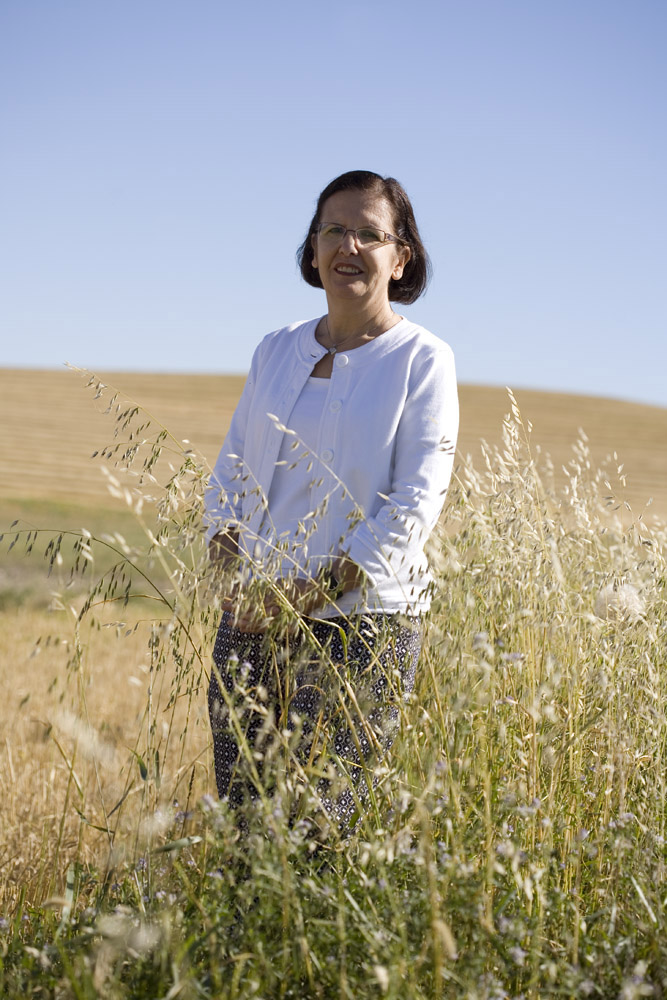Funding supports U of S research in food, medicine, energy and advanced technologies
The University of Saskatchewan has been awarded $3.8 million from the Canada Foundation for Innovation (CFI) for three projects totaling $9.5 million that will help solve economically significant agricultural and health problems and enhance the global scientific leadership of the Canadian Light Source on campus.
By Kris Foster New state-of-the-art equipment will support, for example, work on cold-hardy winter wheat, designer molecules to boost plants' natural defenses against disease, and development of a compact light source to complement the national synchrotron at the U of S.
New state-of-the-art equipment will support, for example, work on cold-hardy winter wheat, designer molecules to boost plants' natural defenses against disease, and development of a compact light source to complement the national synchrotron at the U of S.
"These major CFI investments will provide the tools that these outstanding research teams need to help increase food production, protect human health, and advance key areas of inquiry in energy and materials science and information technology," said U of S Vice-President Research Karen Chad.
"Their innovative work in two U of S signature areas—food security and synchrotron sciences—will enhance our strengths and build powerful collaborative ties with universities and research institutions across Canada."
U of S chemistry professor and Canada Research Chair Soledade Pedras leads a 10-member campus team that will conduct wide-ranging research with global impact using new and upgraded instruments at the Saskatchewan Structural Sciences Centre. The CFI will provide $1.6 million toward the $4 million total cost.
The team includes two other U of S Canada Research Chairs—Ravi Chibbar and Mirek Cygler—as well as scientists from the Colleges of Agriculture and Bioresources, College of Arts and Science, and College of Medicine.
The research will include developing cold-hardy winter wheat to dramatically increase production on the Canadian Prairies, and producing designer molecules called paldoxins which are natural substances that protect plants against disease and promise to reduce pesticide use.
Other members of the team will explore how bacteria cause disease and how they develop resistance to antibiotics. The hope is to develop strategies to overcome multiple drug resistance in diseases such as tuberculosis.
The other two CFI-funded projects both involve synchrotron-related technology.
The CFI will contribute $1.6-million toward the $4.1-million total cost of installing two advanced X-ray microscopes for the spectromicroscopy beamline at the Canadian Light Source (CLS).
With the upgraded microscopes, a team led by U of S associate professor of chemistry Stephen Urquhart will have enhanced capability to examine novel materials and surfaces such as nanomaterials and semiconductors with a sensitivity only possible with synchrotron techniques.
The additions are expected to advance work in areas such as automotive fuel cells; medical implant technology; nanomaterials for new sensors and catalysts; and magnetic materials used in digital storage technology.
Urquhart's team includes U of S Canada Research Chair Ingrid Pickering as well as three CRCs from other institutions. The 10-member team brings together researchers from the U of S, CLS, University of Alberta, Université Laval, University of Manitoba, McMaster University, the Université du Québec's Institut national de la recherche scientifique, University of Victoria, and Western University.
In another CFI-awarded project, Emil Hallin, U of S adjunct professor of physics and CLS director of strategic scientific development, will lead a team that will explore a new way to produce high-energy, high-quality light that has some of the advantages of synchrotron light combined with those available from lasers.
Such light allows researchers to study molecules at very short time scales—for example to observe chemical reactions while they occur. This capability promises to open up a whole new realm of photon-based science.
To support this leading-edge work, the CFI will provide $543,000 toward the $1.36 million total cost of building an experimental endstation for a laser wakefield accelerator facility (LWAF) to be located at the Advanced Laser Light Source (ALLS) in Varennes, Québec.
Using powerful lasers and plasmas (the same phase of matter that makes up the sun), LWAFs are essentially very compact accelerators that provide affordable, high-performance next-generation light sources. As with

